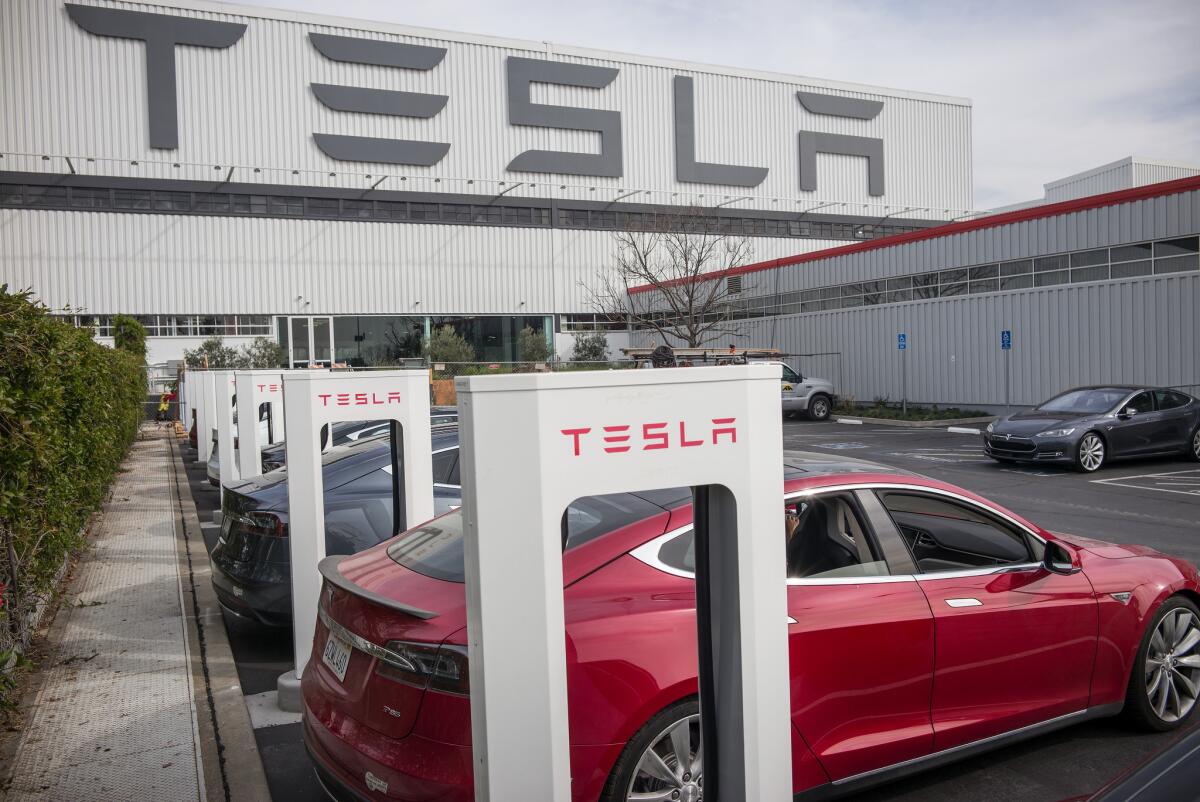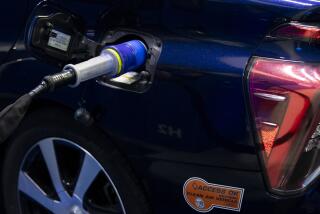Tesla battery swap at Harris Ranch? Not quite

Rumors, news reports and social media posts suggest that Tesla Motors has opened a battery swap facility at its Harris Ranch, Calif., supercharger station. It is said to be capable of replacing the battery in a Model S electric sedan in under three minutes.
Not exactly.
A battery swap facility has opened next to the Tesla-branded supercharger, at the famed gas-and-grub motorists’ stop on the I-5 halfway between Los Angeles and the Bay Area.
But it is not open to the public, and may not ever be, the company says.
A Tesla spokesperson said the Harris Ranch facility is functional, but that battery swaps are only being done on a limited fleet of Tesla cars.
“We are currently running the pilot with a small number of Model S,” said Tesla’s Khobi Brooklyn. “It’s open to a small number of Model S owners.”
What is the point of a Tesla battery swap program that isn’t actually swapping batteries for Tesla owners?
It could have something to do with California’s Air Resources Board and its complicated system of zero-emission vehicle credits.
According to California emissions programs that began going into effect in 1990, automakers that sell vehicles in California are required to produce a certain number of zero-emission vehicles, or ZEVs, based on their total vehicle sales within the state.
Companies earn ZEV credits for the zero-emission vehicles they produce, and lose credits for the non-zero-emission vehicles they produce.
Those that do not produce a sufficient percentage of ZEVs may purchase ZEV credits from other manufacturers to cover their ZEV debits.
Enter Tesla. Because the company sells only ZEVs in California, it has no ZEV debits to offset. So all of the Model S sedans it sells produce ZEV credits that the company can sell to other manufacturers.
It adds up. The company said in February that it earned $66 million from the sale of ZEV credits during its 2014 fourth quarter.
ZEV credits are earned in a complicated way. The California Air Resources Board categorizes vehicles based on their range and the time it takes to refuel them.
A Type 2 vehicle, for example, is one that can go 100 miles of zero-emissions driving, but cannot be refueled in a hurry. A Type 5 vehicle is one that can go 300 miles of zero-emission driving and can be refueled in under 15 minutes.
Automakers earn three credits for the sale of each Type 2 vehicle, the air resources board says -- like a Nissan Leaf. But they earn nine credits for the sale of each Type 5 vehicle -- like a Hyundai Tucson or Honda Clarity hydrogen fuel cell vehicle.
Under earlier state regulations, Tesla Model S sedans, depending on their battery size, were Type 4 and 5 vehicles. The company was earning from five to nine credits per vehicle sold.
But the air resources board changed its regulations for the 2014 model year. (These will affect 2015 vehicles as well.) The Model S was downgraded to a Type 3, earning only four credits per car sale, after the state organization began issuing the fast-refueling extra credit on the basis of “actual fueling events,” board officers said.
“A manufacturer must apply [to the Air Resources Board] for the credits, and must document the refueling event to qualify,” said Elise Kiddie, manager of the board’s zero-emission vehicle implementation section.
When it comes to battery swaps, the regulations get even more complicated. Under current rules, a single vehicle can earn credits for an entire fleet. One Model S can undergo 25 battery changes, and that battery swap credit can be used to apply to a total of 25 vehicles -- each one theoretically earning up to nine ZEV credits -- as long as all the other 24 vehicles are “fast refueling capable,” Kiddie said.
Those regulations are currently under review and could change, Kiddie said.
“Staff was directed to modify the regulation language,” Kiddie said. “One metric could be to say, ‘One vehicle may swap one time, period.’”
In any event, Kiddie said, air board regulations do stipulate that the fast-refueling ZEV credits will not be around much longer.
The agency’s stipulations will change in 2018. After that, credits will be assessed on the basis of range alone. Manufacturers will not earn extra points for fast refueling capability or actual fast refueling events.
Last December, the company said on its website that a pilot program designed to assess the practicality and appeal of battery swapping was coming.
The program “will be available by appointment and will cost slightly less than a full tank of gasoline for a premium sedan,” the company said at the time. “The swap process takes approximately three minutes.”
Tesla’s spokesmen this week declined to discuss the specifics of the Harris Ranch battery swap facility, or to comment on whether the pilot program underway is designed principally to earn ZEV credits with the air resources board.
Twitter: @misterfleming







